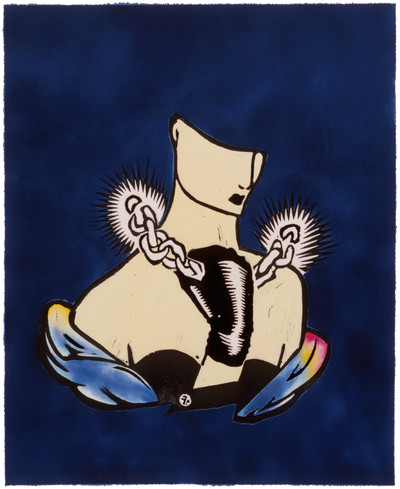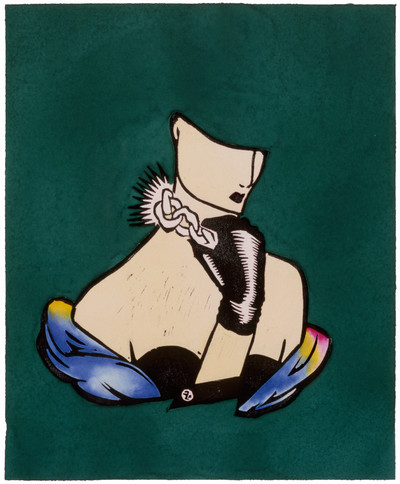Anna Piaggi’s entirely illustrated magazine depicted the anything-goes spirit of 1980s Milan.
By Thomas Lenthal
Illustrations by François Berthoud
Anna Piaggi’s entirely illustrated magazine depicted the anything-goes spirit of 1980s Milan.
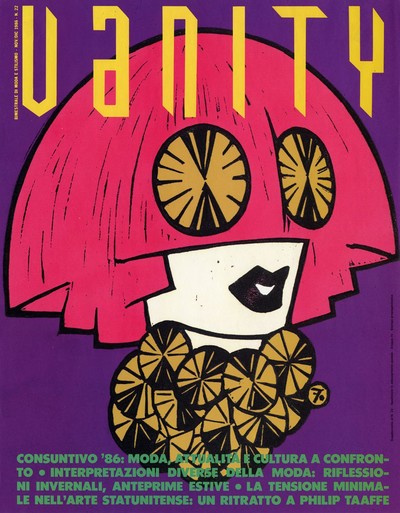
Anna Piaggi’s entirely illustrated magazine depicted the anything-goes spirit of 1980s Milan.
Anna Piaggi’s magazine Vanity, which emerged in the 1980s, was a unique moment not just in François Berthoud’s life, but also in the history of fashion. For Berthoud, the Swiss artist, who had moved to Milan after his studies, it was the first place that his striking, erotically charged illustrations were seen by the fashion cognoscenti. For the industry it was an emblem of the enormous changes it was undergoing: A time when a new generation of designers brought their raw talent, creative desire and couture-like approach to ready-to-wear, and then added a radical dose of street smarts. Paris was shaken up by designers like Claude Montana, Thierry Mugler and Jean Paul Gaultier, as well as by Japanese imports, Yohji Yamamoto and Issey Miyake. Milan was treated to Romeo Gigli, Franco Moschino and the effervescence of Fiorucci. And observing it all was Anna Piaggi, an already legendary figure, muse for creative people of all types, and the embodiment of fashion’s newfound spirit.
She founded Vanity in 1981. Entirely illustrated, at the beginning by a single artist, it instantaneously resurrected fashion illustration, bringing back from the dead a genre whose raison d’être had been eclipsed by photography. The magazine was also a showcase for Anna Piaggi’s vision of what fashion could be – forward-looking yet anachronistic, popular yet anti-commercial, individual yet part of a movement – illustrated by the particular talent of a group of young artists that included Antonio Lopez and François Berthoud.
Vanity survived the death of Lopez, one of its key contributors, aged 44, but was eventually shuttered in the mid-80s when, says Berthoud, ‘[Publishers] Condé Nast lost interest in the project’. Anna Piaggi continued working with the company, her celebrated doppie paggine in Vogue Italia making her a constant and vital presence until her death aged 80 in 2012. ‘She had a great understanding of and passion for fashion,’ says Berthoud, who now lives in Zurich, ‘and she could write really well. She was truly unique.’
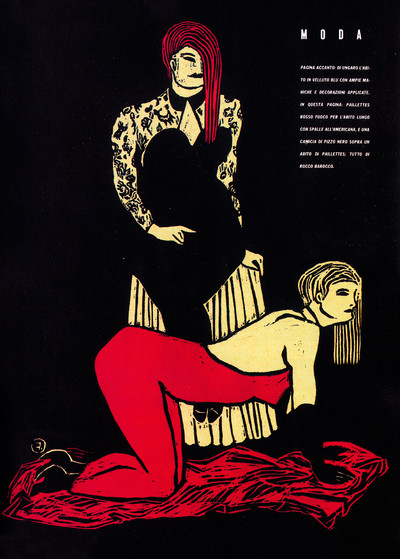
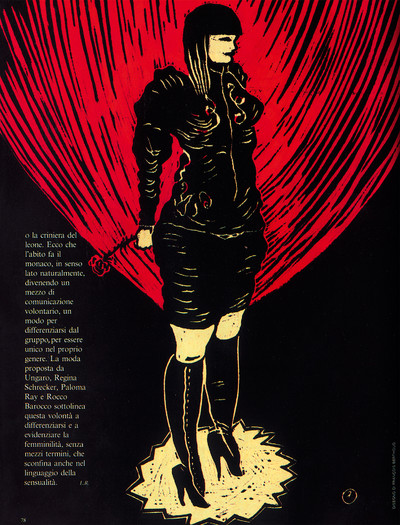
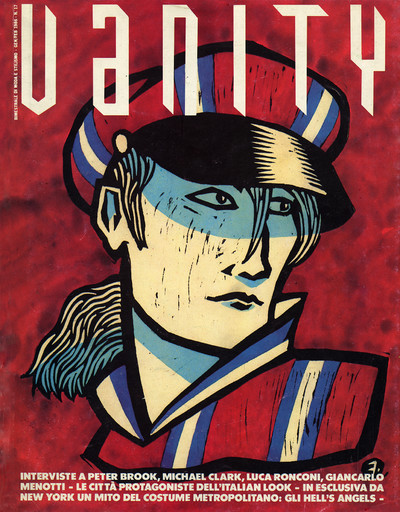
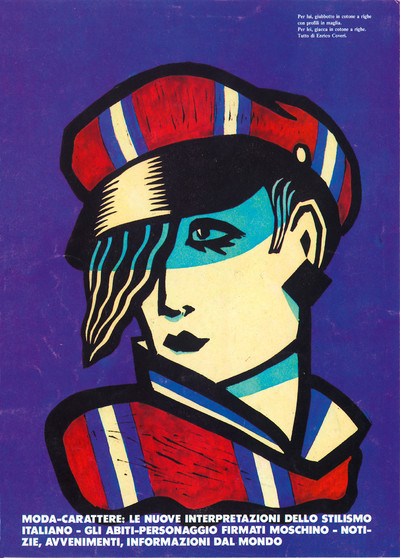
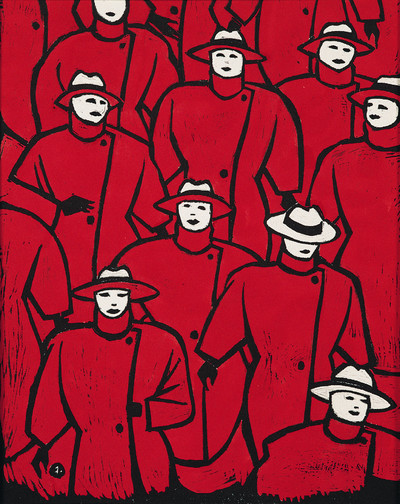
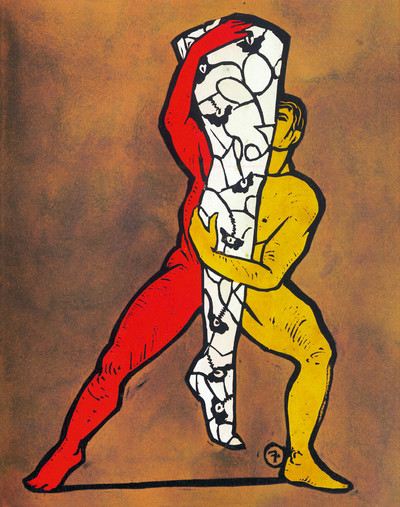
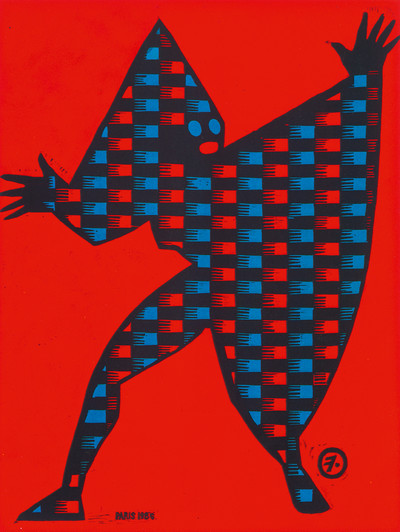
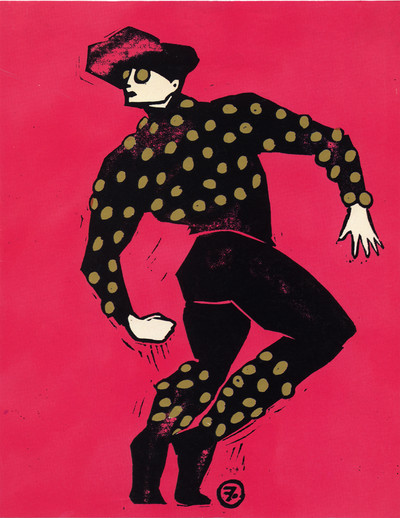
Thomas Lenthal: François, when did you learn your craft as an illustrator?
François Berthoud: As a kid, I just drew all of the time. I did a foundation year at an art school in La Chaux-de-Fonds, Switzerland, and learned the basics of drawing, sculpture, colour theory. It was the kind of place where you could also study jewellery or engraving the movements of watches – which was the industry in that area – but I wanted to study graphic design, to make images that were in the streets, which could be visible all around. That was my aim. I was 17 and things were very different then; the industry was much smaller and people didn’t really know that imagery would explode the way it has today, that there would be this proliferation of photography and printed images.
After your studies, what prompted your move from Switzerland to Milan? What made Milan the right city to begin your career at that moment in time?
Firstly, I could speak the language because my mother is Italian. At the time, the choices were Paris or not Paris! Paris felt like more of an obvious choice, but I had this feeling that Milan could be different and interesting. I also had the chance to meet the people at Condé Nast through friends and got a job in Milan.
Laying out pages?
Yes, as a graphic designer.
For what magazine?
We were doing Vogue Pelle, Vogue Sposa and Vogue Bambini. My boss was Carla Sozzani. I was 22 – this was right after school in 1982.
So Milan wasn’t the master plan but rather an opportunity to get out of Switzerland?
Exactly, escape! But I was definitely interested in fashion. And as I mentioned, I was drawing all the time and doing illustrations. By the time I had completed my studies, I was getting confident with my own style – it had taken time to focus on what would make my drawings recognizable and unique.
Did you know you wanted to eventually venture into illustration and away from graphic design or did you see yourself becoming an art director?
I actually became the art director of Vogue Sposa! The good thing was that I was qualified to do many different things – graphic design, typography and photography. At Vogue Bambini, they would ask for illustrations and I would do those, too. People liked me because I could do things. However, I was definitely more interested in painting and illustration than in becoming an art director.
‘Armani, Moschino, Fiorucci… the whole system of Italian fashion emerged and developed during the years that Anna Piaggi was editing Vanity.’
Could you describe the fashion landscape, specifically in Milan, in the 1980s?
It was the beginning of everything. Milan was starting to become what it is now. Armani and Moschino were already there. I remember seeing the second Moschino show, which was quite provocative and over the top. Then Versace came along. The whole system of Italian fashion emerged and developed during those years – not only the brands and designers but the advertising, the publicity, the ideas of how to show and promote products. The entire system was being built day by day.
So essentially when you arrived in Milan, you had no idea that it was starting to become the place to be.
It was a total coincidence. I don’t think anybody there even knew that then. There was this demand for people who could do things. When people needed stylists for magazines then, there weren’t people who had any professional training for that, so they would just hire girls who dressed nicely and had a mother with some couture dresses in her closet. That was the best reference you could have to become a stylist at Condé Nast. That was how it was. Later, I had an apartment in Paris, in Rue des Archives, and I spent some time there but I was attracted back to Milan because it was more dynamic – I was constantly working and getting involved in projects there. I was at Fiorucci’s store before he became a world phenomenon; Madonna was singing at Plastic, she was unknown then –
so it was a really exciting place to be.
What was your rapport with the kind of fashion illustration that had come directly before you?
My cultural references came more from comic strips. That was my thing. In fact, I immediately began doing comics that were published in Italy while I was working at Condé Nast.
What kind of comics were you doing?
It’s hard to explain. There was one magazine called Alter in Milan. The content was really varied, and really, really funny. At the time, there was a strong group of illustrators there. Comic artists in Italy were either published in Alter or in Frigidaire in Rome. It was very experimental; it had nothing to do with the [comic-book] movements in Belgium or France and was rather more influenced by American comic artists. When I started to work at Vanity, I didn’t know exactly what fashion illustration was – besides of course knowing about the work of René Gruau and Antonio Lopez.
‘We were all trying to work out how to tell fashion stories through non-photographic images and communicate about fashion in a different way.’
Tell me about Vanity. How and why was it launched?
Vanity was created by Anna Piaggi and was devoted to new and emerging Italian fashion. The entire concept of the magazine was that it was illustrated entirely from start to finish by Antonio Lopez. He did four or five, maybe even six issues. He was amazingly talented and capable of expressing the fashion of the moment.
Anna Piaggi was enthusiastic about things and helped people. So she would talk enthusiastically about this person, about this young designer, this special collection, and you would listen to her and her opinion would somehow convince others, too. I think her credibility and creativity in terms of both how to present and communicate fashion were certainly highly considered at the time.
So before having an official outlet or role, she was an opinion maker, someone who was socially active, who people were interested in and who had a point of view?
Yes. She had a very good relationship with creative people because she could understand what they were doing, and she loved them and helped give them visibility. She was not the kind of person that you thought would become the editor in chief of a magazine. She was a free spirit rather than a manager.
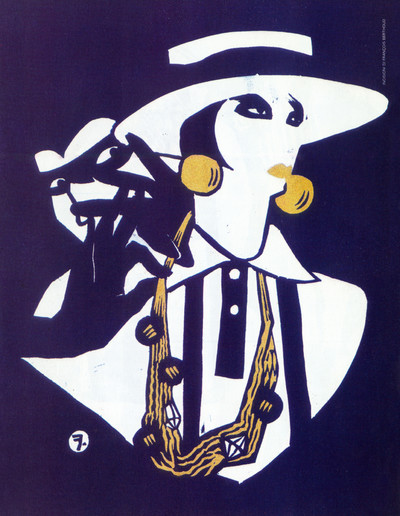
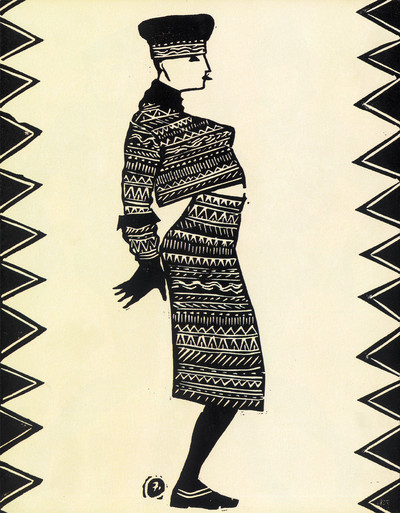
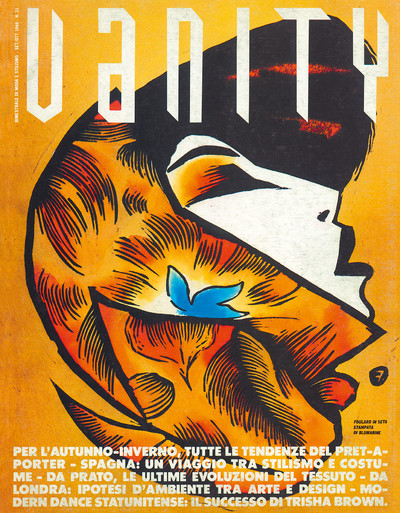
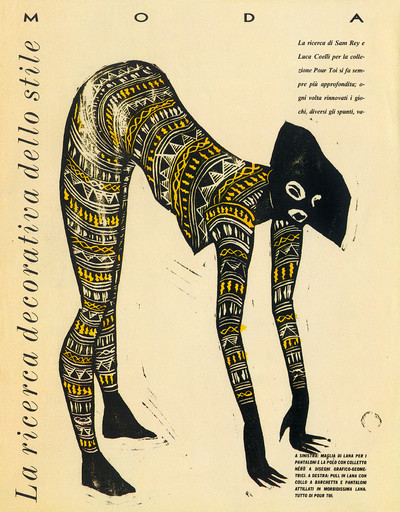
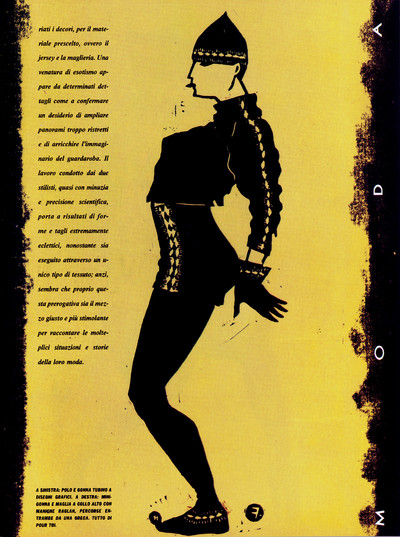
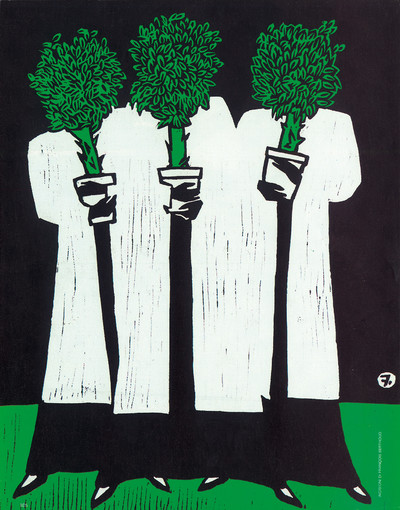
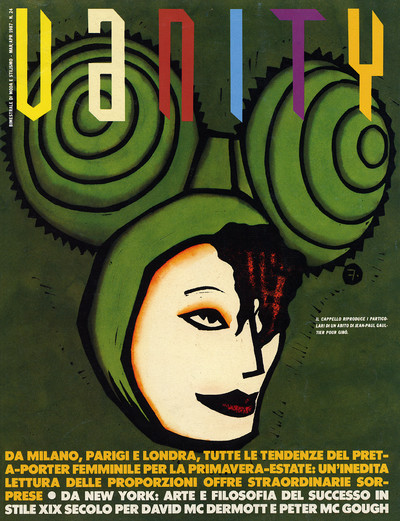
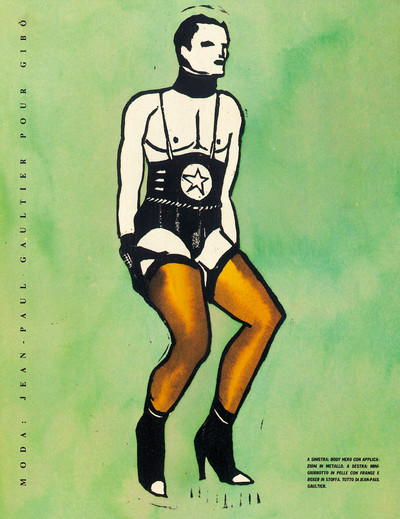
So how did you meet her and start working on Vanity?
I had met her a couple of times before, here and there, so we knew each other. When Antonio Lopez could no longer work because he became ill, they decided to continue the project – even though the magazine was so connected to him. They were looking for new contributors and they picked up on my work and a group of other comic artists – I suppose they felt we were capable of drawing, creating interesting images and that we were hip and young. They called us all in for a big meeting at Condé Nast. I knew some of the others, most of them were living in Bologna or Rome, not Milan. Lorenzo Mattotti was in Milan, so I knew him. Suddenly there was this group of crazy kids in their 20s – I was 25 or 26 – in Condé Nast’s offices.
So you worked on all the issues after Antonio’s departure from the magazine to the end?
Yes. I did many of the covers, too – around seven. Mattotti also did the covers for a period – they had this idea of having one illustrator do a series of covers. Mattotti knew nothing about fashion and was not interested in it, but he is such a good draftsman that he could do anything at all, and he is fast. He was a real maestro. He did lots and lots of pages. We were all working like slaves and being paid 200,000 lire a page.
That’s around €100 a page. That was some money in the 1980s, did you live off it?
Yes, that and some other things. I also did advertising – some of it was illustrated in-house.
What were the first illustrations that Anna Piaggi commissioned from you?
For the first issue they asked each one of us to do between three to six pages –
we all had very different styles and approaches. Most of the other contributors didn’t have any interest or experience in fashion. I was probably the one most connected to the fashion world because I had already worked on magazines and had learned a lot very quickly under Carla Sozzani. For me it was interesting because I could mix fashion, which I liked, with drawing and illustration; it was the perfect cocktail.
How was it working with Piaggi?
Very easy. She was always happy. She always had intelligent insights and could open your eyes to things. There was also an art director, Alberto Nodolini, who was also the art director of Vogue at the time. He was what you’d call a real art director: he would call us to his desk and spend a lot of time communicating with us.
Would they give you pictures of the collections as starting points?
Yes, and slides. I would also go to see the shows.
How many drawings would you produce for each issue?
In some issues I would do 30 pages and the cover, too. I was working day and night on it; I was totally stressed.
You are very fast though.
I am fast, but at the time I was using demanding techniques like woodcarving and linocutting – there was a lot of blood involved! And no possibility of retouching either.
‘We could do virtually anything we wanted: I placed the Gaultier bra on the head of a girl to make Mickey Mouse ears – no one said a thing.’
Why did you use lino?
I could have definitely done something simpler for sure! I was looking for those really hard, sharp, black lines. I was using ink and markers on acetate, and then with a knife I would scratch it so I could have negative lines – very sharp in the blacks – and then I would make the edges even sharper. I thought, I’m engraving, so let’s try and do the real thing and see what happens. And when I tried it, I was super excited because the result was beyond my expectations. It created effects I could not have imagined. It was powerful and in your face. Also, the colours with the ink, the combination was just right and it became a signature.
And that was something you established while at Vanity? Would you say it was where you developed your style? Yes. It started from there and it evolved in a lot of other ways.
It is something you own, no one else does it.
Yes, basically. Just by chance from my bedroom! It was an incredible period really.
Looking at Vanity now, what do you think it says about its context, origin and fashion in general?
I think that the Vanity experience was one of a kind. For fashion people, as well as the art world and graphic designers, it has always been seen as exceptional. People often tell me that they have a collection of copies. It was a remarkable experience for all of those involved. We were all trying to work out how to tell fashion stories through non-photographic images and communicate about fashion in a different way. It was kind of crazy because we could do virtually anything that we wanted. There was an opera section at the end of each issue because the art director was an opera lover!
When I was doing those covers, they would give me a dress to show, but I would do a head shot, a close-up, so in the end you saw nothing of the dress really. Some drawings didn’t even really make sense. For instance, I placed the Gaultier bra on the head of a girl to make Mickey Mouse ears – and no one said a thing. I don’t know if that’s a reasonable way to present fashion in the long term. I don’t know if those tricks could only have been pushed so far, but at the time it was perfectly fine and good fun. I am very sentimental about it because it was a great period. It was amazing, I could not have expected more than what happened in such a short space of time.
When it was happening, did you realize how exceptional the experience was?
No, but I was aware that this thing was a great opportunity, that I had access to a playground where I could really push myself and create the most fantastic things I could think of – it was the moment and the place to do it.
